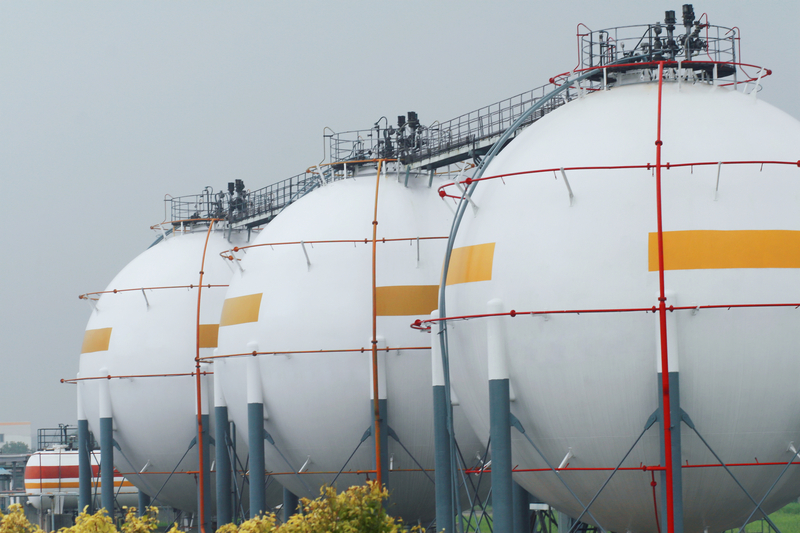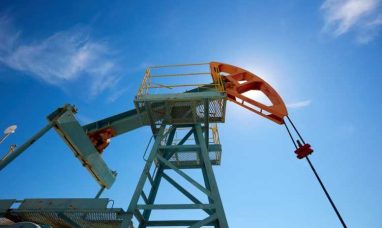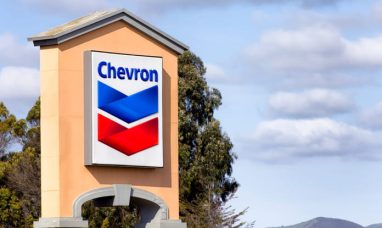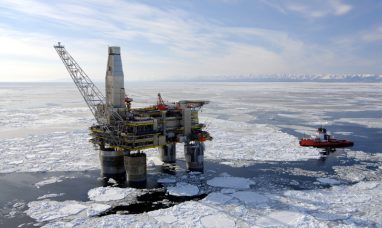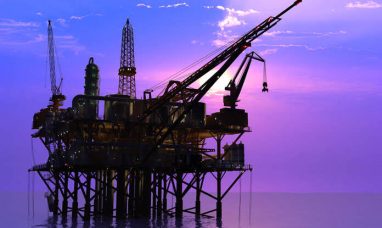DUBLIN, Feb. 22, 2024 /PRNewswire/ — The “North America Oil & Gas Pipeline Market, By Country, By Competition Forecast & Opportunities, 2018-2028” report has been added to ResearchAndMarkets.com’s offering.

The North America Oil & Gas Pipeline Market was valued at USD 6.52 billion in 2022 and is anticipated to project robust growth in the forecast period with a CAGR of 7.01% through 2028, reaching USD 9.88 billion
The exploration and production of unconventional resources, particularly shale oil and gas, contribute significantly to the demand for pipeline infrastructure. Advancements in technologies such as hydraulic fracturing and horizontal drilling have unlocked vast reserves, necessitating an expanded and modernized pipeline network to transport these resources to markets. The continued growth of unconventional resources is expected to be a persistent driver of the Oil & Gas Pipeline Market in North America.
Key Market Drivers
Increasing Energy Demand and Production
One of the primary drivers of the North America Oil & Gas Pipeline Market is the ever-growing demand for energy in the region. As the population continues to rise, accompanied by industrial expansion and urbanization, the need for reliable and efficient energy sources has surged. This demand is met significantly by the oil and gas sector, which relies heavily on pipelines for transportation. With North America being a key player in global energy production, the construction of pipelines has become imperative to facilitate the movement of oil and gas from extraction points to refineries and ultimately to end-users.
The development of unconventional resources, such as shale oil and gas, has further amplified the demand for pipelines. Technological advancements, especially in hydraulic fracturing and horizontal drilling, have unlocked vast reserves that were previously economically unviable. This has led to a substantial increase in production levels, necessitating an expanded and modernized pipeline infrastructure to transport these resources efficiently. As a result, companies in the oil and gas sector are investing heavily in pipeline projects to meet the escalating energy demands of North America.
Infrastructure Modernization and Replacement
The aging infrastructure of existing pipelines has become a significant driver for the North America Oil & Gas Pipeline Market. Many pipelines in the region were constructed several decades ago, and their maintenance costs have risen due to wear and tear over time. Moreover, technological advancements have introduced more efficient and environmentally friendly pipeline materials and construction techniques. As a result, companies are increasingly inclined towards replacing or upgrading their existing pipelines to enhance efficiency, reduce operational costs, and comply with evolving safety and environmental regulations.
Modern pipelines incorporate advanced technologies such as smart sensors and monitoring systems that enable real-time detection of leaks or faults, enhancing overall safety and reducing the environmental impact of pipeline operations. Governments and regulatory bodies are also incentivizing pipeline operators to invest in the replacement and modernization of infrastructure to ensure the integrity of the network and minimize the risk of incidents.
Geographic Expansion and International Trade
The North America Oil & Gas Pipeline Market is significantly influenced by the region’s strategic position as a major player in the global energy trade. North American countries, particularly the United States and Canada, possess substantial oil and gas reserves, making them key exporters in the international market. To capitalize on this, companies are investing in the expansion of pipeline networks to connect domestic production centers to export terminals and border crossings.
The increasing focus on international trade agreements and partnerships further drives the need for extensive pipeline networks. Pipelines facilitate the efficient transportation of oil and gas across borders, connecting production areas with refineries and export terminals. As North American countries seek to strengthen their positions in the global energy market, the expansion of cross-border pipelines becomes crucial for enhancing trade capabilities and meeting the energy needs of international partners. This driver underscores the interconnected nature of the global energy landscape and the pivotal role that North American pipelines play in supporting international energy trade.
Key Market Challenges
Regulatory and Environmental Hurdles
One of the prominent challenges faced by the North America Oil & Gas Pipeline Market is the increasingly stringent regulatory environment and heightened environmental concerns. As awareness of climate change and environmental impact grows, governments and regulatory bodies are imposing stricter regulations on pipeline construction and operation. Obtaining permits for new pipeline projects has become a complex and time-consuming process, with rigorous assessments of potential environmental risks and social impacts.
Public opposition to pipeline development has also intensified, leading to legal battles and protests. Concerns over potential oil spills, water contamination, and habitat disruption have fueled resistance from environmental groups and local communities. Balancing the need for energy infrastructure with environmental conservation and safety considerations poses a significant challenge for pipeline operators in North America. Navigating this regulatory landscape requires substantial financial investment and effective communication strategies to address public concerns and comply with evolving regulatory requirements.
Infrastructure Security and Cyber Threats
The North America Oil & Gas Pipeline Market faces a growing challenge in ensuring the security of its infrastructure against cyber threats. With the increasing digitization of pipeline operations, the industry becomes more vulnerable to cyber-attacks that can disrupt operations, compromise sensitive data, and pose serious safety risks. Pipelines rely on complex supervisory control and data acquisition (SCADA) systems and other digital technologies for monitoring and control, making them potential targets for malicious actors seeking to exploit vulnerabilities.
As the industry adopts advanced technologies to enhance efficiency, the risk of cyber threats escalates. A successful cyber-attack on pipeline systems could lead to operational disruptions, environmental disasters, and significant economic losses. Pipeline operators must invest in robust cybersecurity measures, including regular risk assessments, employee training, and the implementation of cutting-edge security protocols, to safeguard their infrastructure against evolving cyber threats.
Volatility in Oil and Gas Prices
The North America Oil & Gas Pipeline Market is profoundly affected by the inherent volatility in oil and gas prices. Fluctuations in global energy markets can have a direct impact on the profitability and feasibility of pipeline projects. When oil and gas prices are low, exploration and production activities may decrease, resulting in reduced demand for new pipelines. Conversely, during periods of high prices, there may be an increased push for exploration and production, but the uncertainty of market conditions makes long-term investments in pipeline infrastructure risky.
The cyclical nature of the oil and gas industry poses challenges for pipeline operators in terms of project planning and financing. Companies must navigate a delicate balance between responding to immediate market demands and ensuring the long-term viability of their pipeline investments. Economic downturns can lead to project delays, cancellations, or financial strain on companies operating in the North America Oil & Gas Pipeline Market, highlighting the need for strategic planning and risk management in an industry closely tied to global commodity prices.
Key Market Trends
Integration of Advanced Technologies for Efficiency and Safety
A significant trend in the North America Oil & Gas Pipeline Market is the increasing integration of advanced technologies to enhance operational efficiency and safety. The industry is leveraging innovations such as Artificial Intelligence (AI), Internet of Things (IoT), and machine learning to optimize various aspects of pipeline management. One notable application is the implementation of smart sensors along pipelines, providing real-time data on factors like temperature, pressure, and flow rates. These sensors enable predictive maintenance, helping operators identify potential issues before they escalate into critical failures.
AI and machine learning algorithms are employed to analyze vast datasets, improving decision-making processes related to pipeline operations. Predictive analytics assist in forecasting equipment failures, optimizing maintenance schedules, and enhancing overall asset performance. This trend not only increases the reliability of pipeline infrastructure but also contributes to cost savings by minimizing downtime and preventing costly repairs.
Furthermore, the adoption of drone technology for pipeline inspection is gaining momentum. Drones equipped with advanced imaging and sensing capabilities can efficiently survey large stretches of pipelines, identifying anomalies, leaks, or encroachments. This enhances the speed and accuracy of pipeline monitoring while reducing the need for manual inspections in challenging terrains. The integration of these advanced technologies reflects a broader industry shift towards digitalization and automation to improve efficiency, reduce operational risks, and meet increasingly stringent regulatory requirements.
Transition to Sustainable and Low-Carbon Energy Sources
Another prominent trend in the North America Oil & Gas Pipeline Market is the industry’s response to the global push for sustainable and low-carbon energy sources. As the world shifts towards cleaner energy alternatives to combat climate change, the oil and gas sector is adapting its strategies to remain relevant and environmentally responsible. This transition is influencing pipeline projects in several ways.
Firstly, there is an increasing focus on pipelines that transport natural gas, which is considered a cleaner-burning fossil fuel compared to oil. Natural gas pipelines are integral to the energy transition, facilitating the shift away from more carbon-intensive energy sources. Additionally, there is a growing interest in pipelines associated with carbon capture and storage (CCS) projects. These pipelines transport captured carbon dioxide for storage underground, reducing greenhouse gas emissions from industrial processes.
Furthermore, the North America Oil & Gas Pipeline Market is witnessing a rise in projects associated with hydrogen transportation. Hydrogen is gaining recognition as a clean energy carrier, and pipelines are being repurposed or newly constructed to transport hydrogen to end-users. This trend aligns with the industry’s commitment to supporting the development of a low-carbon economy and meeting the evolving energy needs of a more sustainable future. As the focus on environmental responsibility intensifies, the North America Oil & Gas Pipeline Market is likely to witness continued innovation and adaptation to support the transition to cleaner energy sources.
Competitive Landscape
Company Profiles: Detailed analysis of the major companies present in the North America Oil & Gas Pipeline Market.
- TC Energy Corporation
- Enbridge Inc.
- Kinder Morgan Inc.
- Energy Transfer LP
- Williams Companies Inc.
- ONEOK Inc.
- Plains All American Pipeline, L.P.
- Magellan Midstream Partners, L.P.
- Sempra Energy
- Columbia Pipeline Group
Report Scope
North America Oil & Gas Pipeline Market, By Type:
- Crude Oil Pipeline
- Natural Gas Pipeline
North America Oil & Gas Pipeline Market, By Application:
- Offshore
- Onshore
North America Oil & Gas Pipeline Market, By Source:
- Upstream
- Midstream
- Downstream
North America Oil & Gas Pipeline Market, By Country:
- United States
- Canada
- Mexico
For more information about this report visit https://www.researchandmarkets.com/r/silmcg
About ResearchAndMarkets.com
ResearchAndMarkets.com is the world’s leading source for international market research reports and market data. We provide you with the latest data on international and regional markets, key industries, the top companies, new products and the latest trends.
Media Contact:
Research and Markets
Laura Wood, Senior Manager
press@researchandmarkets.com
For E.S.T Office Hours Call +1-917-300-0470
For U.S./CAN Toll Free Call +1-800-526-8630
For GMT Office Hours Call +353-1-416-8900
U.S. Fax: 646-607-1907
Fax (outside U.S.): +353-1-481-1716
Logo – https://mma.prnewswire.com/media/539438/Research_and_Markets_Logo.jpg
![]() View original content:https://www.prnewswire.com/news-releases/north-america-oil–gas-pipeline-markets-competition-forecast–opportunities-2028f—infrastructure-modernization-and-replacement-bolsters-growth-302069054.html
View original content:https://www.prnewswire.com/news-releases/north-america-oil–gas-pipeline-markets-competition-forecast–opportunities-2028f—infrastructure-modernization-and-replacement-bolsters-growth-302069054.html
SOURCE Research and Markets

Featured image: Megapixl © wkcode



